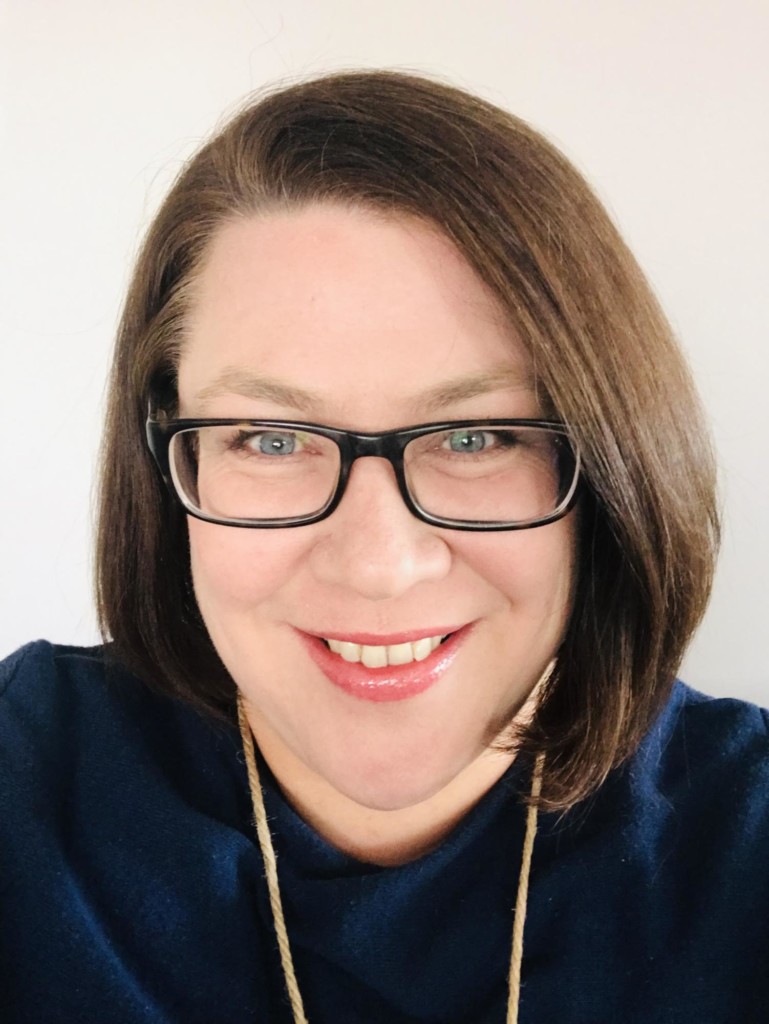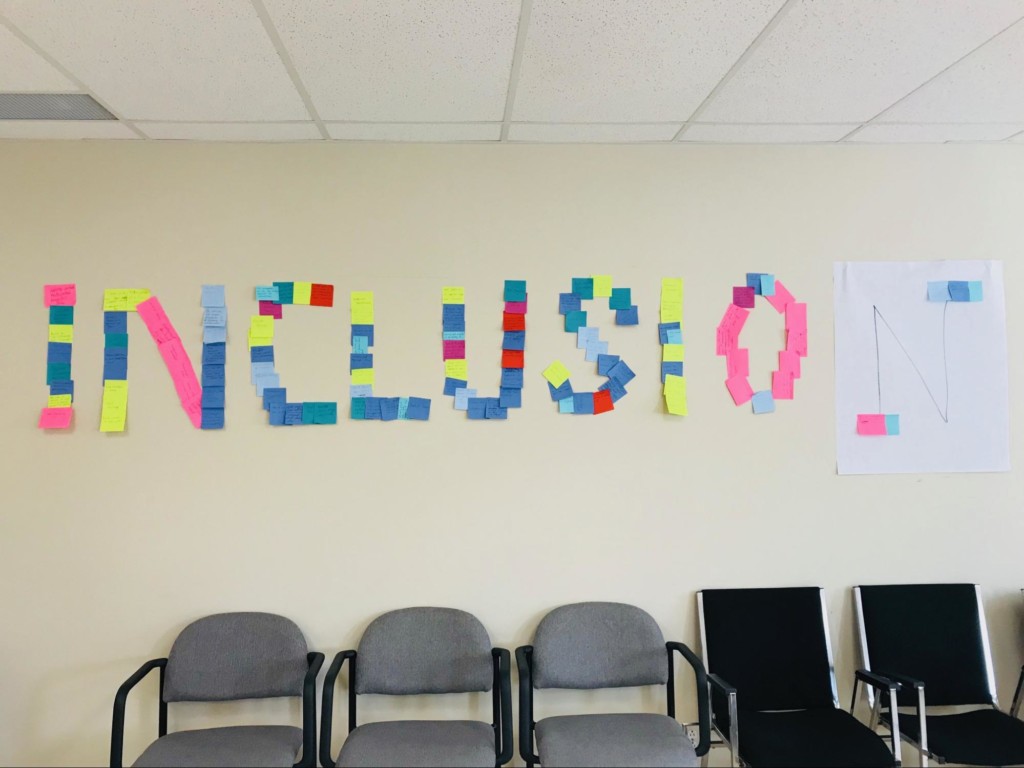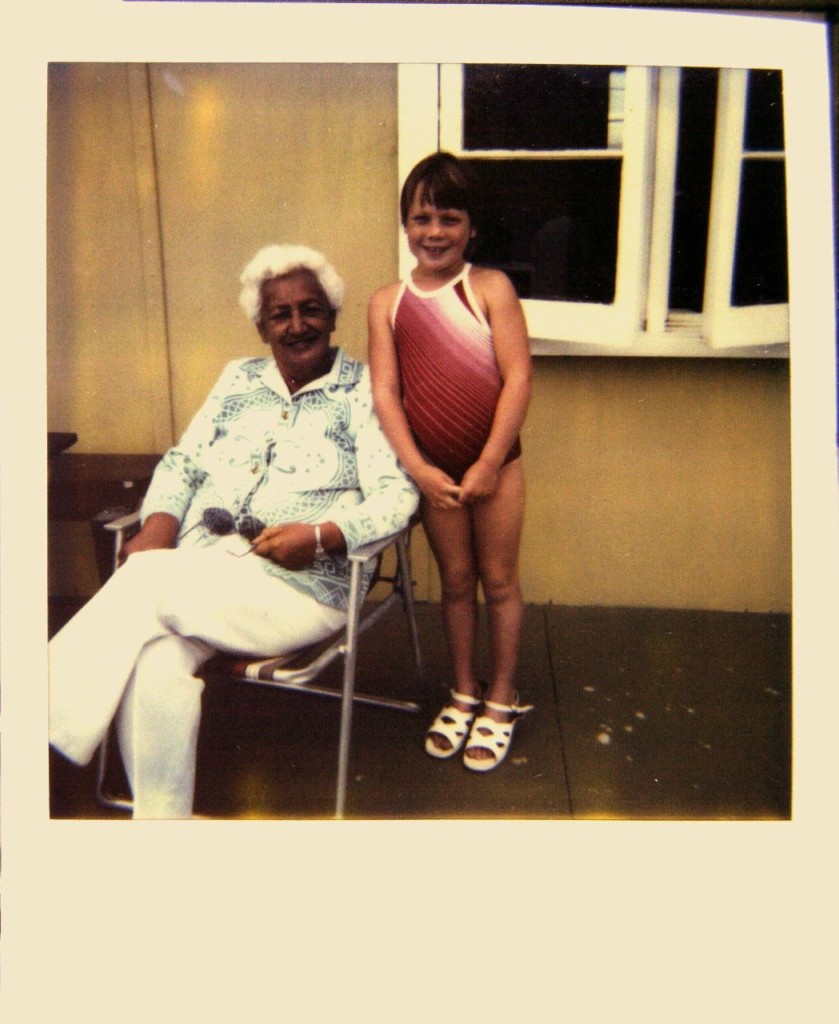Peta Wilkinson is, in her own words, “a people’s person”. She is a Diversity & Inclusion advocate, who has a long career working closely with people and helping them better skills that are vital for their career success.
This week, I had the pleasure of having a conversation with Peta – a law graduate that has an impressive range in her professional experience, navigating from career coaching to Diversity & Inclusion in the workplace, and also, of course, Design Thinking. In this interview, she shares – amongst many other pearls of wisdom – how Design Thinking can help entire industries to become a safer and welcoming space for all people.
 Peta Wilkinson (personal archive).
Peta Wilkinson (personal archive).
RG – Hi Peta. It’s a pleasure to have you here today. To start, could you tell our readers a bit about yourself?
PW – I am a people’s person. From growing up as the youngest of 4 in a diverse family in New Zealand, to studying law to champion equity and fairness, to global roles centred around employee and customer experience, to wrangling friends to make salami and preserves, people are at the heart of who I am, what I’m about and what I do.
RG – Can you give our readers a brief description of your career history?
PW – I started working at a jewellery importing business when I was just seven years old until I moved to the ‘big city’ to complete my BA/LLB and Barrister and Solicitor qualifications. Whilst I was studying, I worked in a call centre for an electricity company, and after completing my qualifications, I left for a 6-week holiday to Australia. That was 19 years ago. Since then, I’ve worked in commercial litigation, been a trainer and a global account manager for a legal publisher, headed up a consulting and client services practice for a compliance and risk software business, headed up a product services function, launched my own career coaching business, been a global customer experience manager – all before my most recent role leading an employee experience program, focussing in inclusion and diversity, for a global mining company.
RG – That’s quite the resume! You have some experience with Design Thinking and even refers to yourself as a “convert”. You have also attended Echos’ Design Thinking experience course. Tell us about how Design Thinking came about for you.
PW – My first experience with Design Thinking was back in 2014 when Design Thinking was a relatively new methodology. Seconded to project manage a customer stream on a transformation program, those on the programme received introductory DT training. Although new to it, I was surprised about how easy the concepts were for those who were people-centric, empathetic, collaborators – for those who dropped the ego and power play and picked up the curiosity and influence play. For those who were used to linear processes, hierarchical structures and silver bullets, they found it really tough and had to learn a new skillset. For me, on the other hand, was a matter of blending the new and old, and I have used techniques of Design Thinking ever since. Design Thinking, like many methodologies, improves and changes over time, so in 2017 I was looking for a refresher course, and that’s when I attended Echos’ Design Thinking Experience in Melbourne in which I worked with individuals from different industries. What was different about this course, from the one I had done previously, was the flyover of the entire process on the first day, then a step-by-step deep dive into each stage on the following day. Most courses start with an agenda and get going, but the flyover gave you comfort in the direction. It’s a good technique. I also loved the fact that we worked on something real and tangible. My team worked on ‘how might we get a minority ethnicity to give more blood’. This meant we had to speak to people, do desktop research, then observe and participate at the Blood Bank to understand this ‘real’ problem from different points of view. It also meant the use of a lot of Post Its. The process was awesome, and the results so much better.
“Make no mistake. I didn’t do this by myself. I simply wrangled the collective, and I am immensely grateful to everyone.”
RG – You have recently applied Design Thinking techniques to a significant Inclusion & Diversity project at a leading global mining company. Could you give our readers a summary of what you worked on, how you applied Design Thinking to it and what was the outcome?
PW – Though I freely admit that I am not a ‘purist’ – I’m more of a ‘blender’ – I broadly used the Design Thinking framework to create a training and engagement programme. The initial challenge was to deliver a transformational diversity and inclusion training and engagement programme for a global mining company, one which bought both the minority and majority on the journey, appealed to hearts and minds, activated inclusive actions and improved the overall culture. Projects had been outlined, so I set to validating the approaches amidst the broader cultural contexts, both geographical and organisational. I looked inside and outside the business for what has been successful and what to avoid. I mined data points. I interviewed a diverse range of employees. I surfaced networks, approaches and content to help me curate this, and I spent a lot of time on the phone and meeting new people. Make no mistake. I didn’t do this by myself. I simply wrangled the collective, and I am immensely grateful to everyone. I am a fan of customer, market and employee experience and research in particular. Albeit a bit simplistic, quantitative tells you ‘the what’ and priorities, and qualitative tells you ‘the why’ and solutions. Speaking to randomly selected employees, from all over the world, gave me the best sense of what was really happening, what was going on, what the stories were, what and where the career barriers and accelerators were, what the real priorities were, as well ideas for solutions. I think the last point is often overlooked, but it’s important to ask “how might you solve this” or “how might you improve this” as the best ideas often aren’t your own.
“These were real, raw and representative; the turnkey for our success as they cut through and touched the hearts and minds of their colleagues. Also, some of those I spoke with appeared to be great mentors and others were seeking mentors, so I was able to connect mentors and mentees, as well as connect global peers.”
RG – You make an interesting point when you say that listening to others is fundamental to get to the bottom of a challenge. I also noticed the fact that you didn’t do this project in an “innovation lab” format. What was your favourite discovery while working on this particular project?
PW – Those I spoke to were surprised to be asked, really asked, about their experience. The phone method helped establish trust, convey curiosity and demonstrate empathy. As a result, the employees really opened up, but something else happened too. By the end of the call, there was a willingness to participate in the solution by a lot of those I chatted with. So, I asked if they were comfortable sharing their story on camera. Many of them did. Some were afraid of being singled out but agreed to others sharing their stories or having it represented in a scenario instead. And some declined, which I completely respected. We developed thirty short videos and ten scenarios from our employees, some used in the training and others for the engagement plan. These were real, raw and representative; the turnkey for our success as they cut through and touched the hearts and minds of their colleagues. Also, some of those I spoke with appeared to be great mentors and others were seeking mentors, so I was able to connect mentors and mentees, as well as connect global peers. Both were unexpected outcomes. The research pivoted the training and engagement programme, refocusing it to become employee powered and voiced. Without an innovation lab nor budget for travel at this stage, the content was curated, co-created and tested with stakeholders via Webex and phone calls. Ever the pragmatist, I advised that although not ideal, in my experience, a lab is a luxury, especially when your stakeholders are globally located at remote mining sites. The training and engagement content was then tested and piloted with three different audience streams, across three different global sites, to ensure it was portable, globally relevant and that it hit the mark. It received a score of nine out of ten for overall satisfaction, extremely positive feedback and behaviour change was observed and reported back by leaders.
RG – In our courses, there are two tools we use that I know you implemented to your training session too. Tell our readers about them and how you use them.
PW – When participants arrive, they have a Polaroid photo taken, answer some questions and note their contact details on a profile form. The photos and form are affixed to the wall and used in the workshop. I adopted the Echos’ user board tool in the training I developed. It helps with introductions, warms the room quickly, everyone loves their photos and answers are incorporated into our workshop which is especially important if employees who are introverted or are worried about speaking up – in the inclusion and diversity space this can be particularly tricky. At the end of the training, I scan and send these to the attendees, so they can continue to network and collaborate afterwards, too. Want to know the secret to taking a great photo? The ‘vanity angle’ (laughs), which is taking a photo from a height, pointing downwards, whilst telling a joke. It gets the best result. Another tool I used was Echos’ “I like, I wish” exercise. Essentially at the end of the training, participants share as a group what they enjoyed and what they’d like to see improved. I used that in pilot training too, but instead of using it as a round-up at the end of a course, I used it after major chunks of content, multiple times, throughout the course. This gave me a better gauge about what was working and what wasn’t. It demonstrated the art of giving of both constructive and positive feedback, as well as the act of active listening and instant inclusion of that feedback, both of which are inclusive behaviours. I also noted a trend that was surprising to me: there were many more improvements shared at the start of the workshop than at the end of the workshop. It struck me that this is ‘change’ acceptance at work. Typically, people are more critical of change until they’re used to the new pattern. I pointed this out in the sessions, and it was a real ‘aha’ moment for everybody, especially for the leaders.
“Some people and some cultures don’t feel comfortable speaking up, but their inputs are just as important as everyone else’s.”
RG – It’s amazing that two simple tools can have such an impact on how people work together.
PW – Yes, a lot of people fear workshops as they are perceived to be the realm of the extrovert or the ‘show pony’, requiring much public speaking and communicating with people you don’t know and a real fear of being judged. Some people and some cultures don’t feel comfortable speaking up, but their inputs are just as important as everyone else’s. The Ideation/Post It exercise, for example, acts to prove to people that their ideas aren’t dumb as loads of other people have the same idea too. When ideas are added and stacked, improvements are made, and towards the end, you get the really creative ideas.
RG – Do you have an example?
PW – In our I&D training we did this exercise, using different scenarios, more than three or four times and each time we got more ideas and more creative ideas, and from everyone. The exercise got faster and faster, proving that collaboration can be quick and that you can get a 50% plus productivity gain when inclusion and collaboration are done well. That stat was disbelieved by almost everyone at the start of the course and proving this in the room gave me a ‘kapow’ moment. This simple exercise demonstrates the real power of ideation, collaboration, creativity and innovation in practice. The Post Its can then be reorganised to form a process. Also, the process can form a strategy. Next minute you have an action plan which just needs to be executed.
RG – If you don’t mind me shifting gears, tell me a bit more about your diversity and inclusion work. Do you see what you do as political-type work?
PW – I don’t see the inclusion and diversity work as political-type work, I see it as intentionally purposeful. For myself – someone who can’t have children – I see it absolutely aligned with the legacy I wish to leave on this world.
“If you want to innovate, you need to surface, harness, nurture and implement ideas from a truly diverse and inclusive culture.”
RG – What would you say are the most common – and harmful – results of a workplace that fails to be inviting or that doesn’t feel safe for people that are considered “different to the norm”?
PW – Equity and fairness are very important to me. Some of what happens is just unnecessary; some is just wrong. Exclusion can kill people. It can, and it does. Through bullying and harassment, disconnection and isolation we lose amazing people from our workplaces and our planet. However, elevating that a bit, it’s also business imperative. The business case is clear: If you want to reap safety, productivity and engagement benefits as a business, you need to develop and nurture a truly diverse and inclusive culture. If you want to innovate, you need to surface, harness, nurture and implement ideas from a truly diverse and inclusive culture. If you want to minimise business risks or disruption, whether those are product or market risks or safety, harassment and discrimination risks, you need to develop and nurture and truly diverse and inclusive culture. If you want to reflect your customers and communities needs as part of your licence to operate or to support your brand, you need to develop and nurture a truly diverse and inclusive culture. The workplace and communities today won’t be the workplace and communities tomorrow. As someone said to me “it’s just really interesting”.
RG – Where do you think Australia stands when it comes to inclusion and diversity in the workplace?
PW – That’s a big question. Overall, it’s not great if you are in a minority group. It also depends on what’s being measured and what data is available. Evidence-based approaches and clarity around definitions are critical in this space as opinions and backlash are real and frequent. For example, most people think ‘diversity’ is a proxy word for ‘gender’, but it isn’t. It can include, and this isn’t a definitive list by the way, gender or gender identity, age or generation, organisational level, education level, skill level, sexual orientation, indigenous or non-indigenous, culture, ethnicity, race or nationality, physical health and mental health, ability and disability, neurodiversity, caring responsibility, religion, and more. Some of these areas are focussed on and measured more than others. For the sake of brevity, let’s look at some of them.
“Women are missing at all levels. This isn’t a pipeline issue; it’s an inclusion issue.”
 Polaroid of Peta and her grandmother, circa 1980. Ahipara, New Zealand.
Polaroid of Peta and her grandmother, circa 1980. Ahipara, New Zealand.
RG – Please. Can we start with gender?
PW – Australia ranks overall 39th in the Global Gender Gap Index. It ranks 103rd for health and survival of women, 49th for political empowerment of women, 46th for economic participation and opportunity of women, yet we rank 1st for educational attainment! If we then look at the National Gender Pay Gap using data from the Australian Bureau of Statistics, it’s at 14.1%. If we use those who report to WGEA and look at salaries only, it’s at 16.2%. If we include total remuneration – such as bonuses and additional benefits – it rises to 21.3%. That means women are earning between 14.1% to 21.3% less than men. If we then look at representation and participation in the workplace, 86% of chairpersons are men and 83% of CEO’s are men and there are still a considerable number of male-only executive boards. Women are missing at all levels. This isn’t a pipeline issue; it’s an inclusion issue.
RG – It is unbelievable to listen to these numbers in 2019. What about cultural minorities?
PW – The Diversity Council of Australia Inclusion at Work Report reports that Aboriginal and Torres Strait Islander people experience the highest rate of workplace discrimination and harassment than any other demographic group, with 38% experiencing harassment or discrimination in the past year, compared to the 22% of non-Aboriginal and Torres Strait Islander people. That’s an inclusion issue.
RG – I imagine people with disabilities are also excluded from the workplace.
PW – There are 2.1 million Australians of working age with a disability. According to the Australian Network on Disability, those aged between 15 and 64 years with a disability have lower workplace participation rates (53%) than those without disability (83%). Those with disabilities experience higher unemployment rates (9.4%) than those who don’t (4.9%). Of those that work, DCA found that 34% of people with a disability experience workplace discrimination and harassment, compared to those without a disability. This is, also, an inclusion issue.
“If we had better and more inclusive workplaces, we wouldn’t see stats like 23% of women and 16% of men have been sexually harassed at work in the last 12 months.”
RG – What about the LGBTIQ+ community?
PW – Again, according to DCA, 31% of members of the LGBTIQ+ community have experienced workplace discrimination and harassment. In their ‘Out at Work’ research, they found only 32% of their LGBTIQ+ respondents were openly out to everyone at work, resulting in concealment and contributing to depression and dissatisfaction. Yes, this too is an inclusion issue.
RG – Any other thoughts regarding discrimination in the workplace?
PW – If we had better and more inclusive workplaces, we wouldn’t see stats like 23% of women and 16% of men have been sexually harassed at work in the last 12 months. The stats come from the Australian Human Rights Commission national survey.
RG – Are there, in your opinion, any industries that need to improve the most when it comes to workplace inclusion?
PW – Simply, all industries need to improve workplace inclusion. There is not one industry that doesn’t. When looking at industries using sexual harassment as a leading indicator, in the last five years, 81% of employees in the information, media and telecommunications industry, 42% of people in retail and 40% of people in mining industries have been sexually harassed at work, as per the Australian Human Rights Commission. When looking at industries and using gender pay gap as a lead indicator, the biggest gaps appear in the Financial Services, Health Care and Social Assistance, Rental Hiring and Real Estate Services, Professional Scientific and Technical Services and Arts and Recreation industries, as per WGEA. Other lead indicators may change the industry picture too, but imagine all industries improving and collectively impacting to our GDP by 6 – 11%.
“Design Thinking can help elicit these solutions whilst demonstrating diversity and inclusion in practice.”
RG – How do you think Design Thinking can help change the inclusion issue in the workplace?
PW – What I have come to know is that each organisation is different. You really have to understand where the organisation is on the journey and really listen to the employees. Then the leadership team, with the employees, need to co-create specific improvement strategies. Design Thinking can help elicit these solutions whilst demonstrating diversity and inclusion in practice.
RG – What pearls of wisdom would you share with someone who is starting their innovation journey through Design Thinking?
PW – Go to a course, then take it from there.
RG – Could you please share a quote that inspires you?
PW – “Inclusion is everybody’s business.”
If you would like to further the conversation with Peta on Design Thinking or Inclusion & Diversity initiatives, you can connect with her via LinkedIn.
*Header image: fisher.osu.edu
—
Follow us on social
Instagram – Facebook – LinkedIn – Youtube
How Can We Help?
For training and Innovation Journeys in your company: check out our in-house course offering
For upcoming courses in your region: visit our website.
If you have a special project and would like to use Echos’ consultancy services: send us an email.
Want to speak to a real person? Call us on 1300 502 006


 Peta Wilkinson (personal archive).
Peta Wilkinson (personal archive).
 Polaroid of Peta and her grandmother, circa 1980. Ahipara, New Zealand.
Polaroid of Peta and her grandmother, circa 1980. Ahipara, New Zealand.